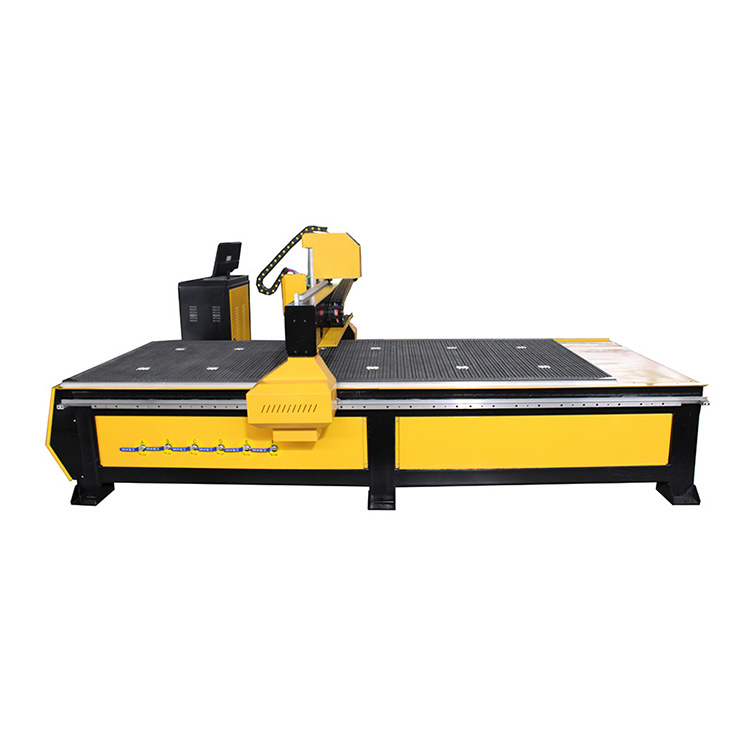
- English
- Español
- Português
- русский
- Français
- 日本語
- Deutsch
- tiếng Việt
- Italiano
- Nederlands
- ภาษาไทย
- Polski
- 한국어
- Svenska
- magyar
- Malay
- বাংলা ভাষার
- Dansk
- Suomi
- हिन्दी
- Pilipino
- Türkçe
- Gaeilge
- العربية
- Indonesia
- Norsk
- تمل
- český
- ελληνικά
- український
- Javanese
- فارسی
- தமிழ்
- తెలుగు
- नेपाली
- Burmese
- български
- ລາວ
- Latine
- Қазақша
- Euskal
- Azərbaycan
- Slovenský jazyk
- Македонски
- Lietuvos
- Eesti Keel
- Română
- Slovenski
- मराठी
- Srpski језик
Can CNC routers do 3D machining?
2024-06-13
Of course they can! CNC routers can do 3D machining, which is creating three-dimensional shapes and designs from a block of material. This feature distinguishes CNC routers from basic CNC milling machines that can only handle 2D or 2.5D work. Below SUNNA will take you to explore a detailed explanation of how CNC routers achieve 3D machining and what you can expect from them.
1. How do CNC routers do 3D machining?
Multi-axis motion:
3-axis CNC routers: These machines move along three linear axes (X, Y, and Z). They can create complex 3D shapes by moving the cutting tool in three directions at the same time. However, for very complex designs and undercuts, additional axes may be required.
4-axis CNC routers: They add a rotary axis (commonly called the A-axis) to the standard 3-axis motion, allowing the workpiece to rotate. This feature is very useful for creating detailed cylindrical objects and complex shapes.
5-axis CNC routers: These routers add two more axes of rotation, providing greater flexibility and the ability to machine complex parts with complex geometries from multiple angles without having to reposition the workpiece.
CAD/CAM Software:
Computer-Aided Design (CAD): Users use CAD software to create detailed 3D models of their designs.
Computer-Aided Manufacturing (CAM): The CAD design is then imported into CAM software, which generates tool paths that the CNC router will follow to machine the 3D object.
Tool Selection:
Different tools, such as ball-nose end mills and V-drill milling cutters, are used for various aspects of 3D machining. These tools can achieve detailed finishes and complex surface contours.
Layered Machining:
To create 3D objects, CNC routers typically use a process called layered machining, in which material is removed in layers, gradually forming the desired 3D shape.
2. Applications of 3D CNC Routers
Prototyping: Creating detailed prototypes of products, components, and models for testing and design verification.
Art and Sculpture: Producing complex sculptures, artwork, and decorative elements with fine details.
Furniture Design: Produce complex shapes and custom designs in furniture making, including sculpted legs, intricate panels, and ornate details.
Mold Making: Make molds for various industries such as automotive, aerospace, and consumer products.
Architectural Models: Create detailed architectural models and components such as facades, columns, and decorative designs.
Signage: Produce detailed 3D signs with raised letters and complex shapes.
3. Advantages of 3D CNC Routers
High Precision: CNC routers can achieve high precision, which is essential for detailed and complex 3D designs.
Consistency: Once programmed, CNC routers can repeatedly produce the same parts with the same accuracy, which is essential for production runs.
Efficiency: CNC routers automate the machining process, greatly reducing the time required to create complex 3D objects compared to manual methods.
Versatility: Ability to process a variety of materials, including wood, plastics, foams, composites, and metals.
The SUNNA CNC router is capable of 3D machining, making it a versatile tool for a wide range of applications from prototyping and art to industrial manufacturing and furniture design. By leveraging multi-axis motion, advanced CAD/CAM software, and the proper tooling, SUNNA CNC routers can create complex and precise 3D shapes, empowering businesses and individual craftsmen.




